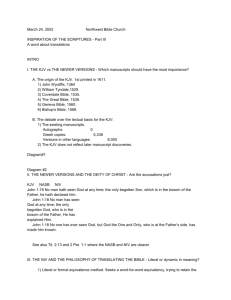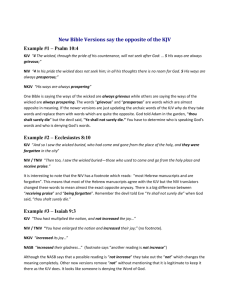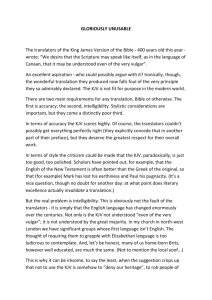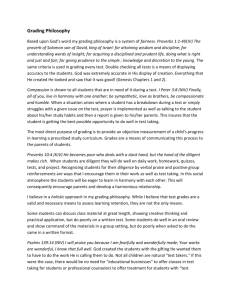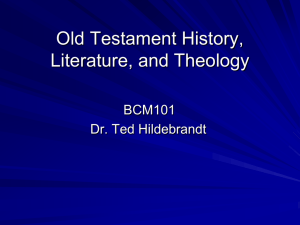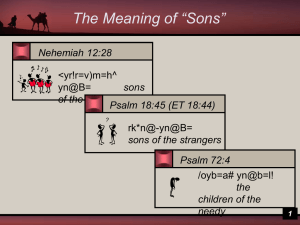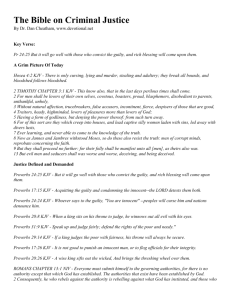Bible Translations, KJV-NIV
advertisement
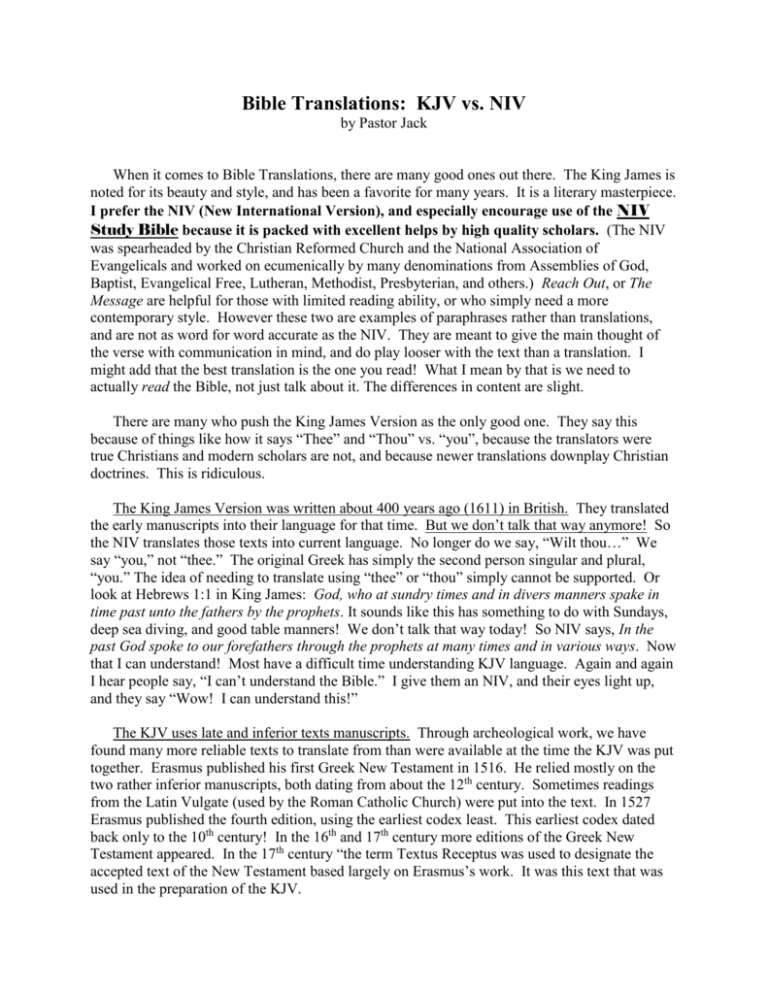
Bible Translations: KJV vs. NIV by Pastor Jack When it comes to Bible Translations, there are many good ones out there. The King James is noted for its beauty and style, and has been a favorite for many years. It is a literary masterpiece. I prefer the NIV (New International Version), and especially encourage use of the NIV Study Bible because it is packed with excellent helps by high quality scholars. (The NIV was spearheaded by the Christian Reformed Church and the National Association of Evangelicals and worked on ecumenically by many denominations from Assemblies of God, Baptist, Evangelical Free, Lutheran, Methodist, Presbyterian, and others.) Reach Out, or The Message are helpful for those with limited reading ability, or who simply need a more contemporary style. However these two are examples of paraphrases rather than translations, and are not as word for word accurate as the NIV. They are meant to give the main thought of the verse with communication in mind, and do play looser with the text than a translation. I might add that the best translation is the one you read! What I mean by that is we need to actually read the Bible, not just talk about it. The differences in content are slight. There are many who push the King James Version as the only good one. They say this because of things like how it says “Thee” and “Thou” vs. “you”, because the translators were true Christians and modern scholars are not, and because newer translations downplay Christian doctrines. This is ridiculous. The King James Version was written about 400 years ago (1611) in British. They translated the early manuscripts into their language for that time. But we don’t talk that way anymore! So the NIV translates those texts into current language. No longer do we say, “Wilt thou…” We say “you,” not “thee.” The original Greek has simply the second person singular and plural, “you.” The idea of needing to translate using “thee” or “thou” simply cannot be supported. Or look at Hebrews 1:1 in King James: God, who at sundry times and in divers manners spake in time past unto the fathers by the prophets. It sounds like this has something to do with Sundays, deep sea diving, and good table manners! We don’t talk that way today! So NIV says, In the past God spoke to our forefathers through the prophets at many times and in various ways. Now that I can understand! Most have a difficult time understanding KJV language. Again and again I hear people say, “I can’t understand the Bible.” I give them an NIV, and their eyes light up, and they say “Wow! I can understand this!” The KJV uses late and inferior texts manuscripts. Through archeological work, we have found many more reliable texts to translate from than were available at the time the KJV was put together. Erasmus published his first Greek New Testament in 1516. He relied mostly on the two rather inferior manuscripts, both dating from about the 12th century. Sometimes readings from the Latin Vulgate (used by the Roman Catholic Church) were put into the text. In 1527 Erasmus published the fourth edition, using the earliest codex least. This earliest codex dated back only to the 10th century! In the 16th and 17th century more editions of the Greek New Testament appeared. In the 17th century “the term Textus Receptus was used to designate the accepted text of the New Testament based largely on Erasmus’s work. It was this text that was used in the preparation of the KJV. Now we have much earlier and superior texts. We have a wealth of material available to us that the translator of the KJV never had. In contrast to the very late 10th, 11th, and 12th century text used by the King James, we now have texts dating back to AD 350. Codex Vaticanus and Codex Sinaiticus are major uncial manuscripts dating back to 350. There are other important manuscripts in the centuries following. We have found some papyri dating back as far as 200, and one (P52) dates back to AD 125. A good example of applying this is a look at I John 5:7. KJV reads, “For there are three that bear record in heaven, the Father, the Word, and the Holy Ghost: and these three are one” But the NIV omits this because as it explains in the footnote, those words are “not found in any Greek manuscript before the sixteenth century.” What evidently happened here is that a scribe wanted to put in a plug for the Trinity and added his doctrine to the text. This is the worst of the KJV mistranslations, but it makes the point. There are plenty other places the Trinity can be shown, but one should not add his own thoughts to the text to support a doctrine. In closing, actually comparing one translation to another, one begins to realize that the content is pretty much the same. It would not affect doctrines. It is simply a matter of finding a translation you are comfortable with, and actually reading it! The best translation does little good just sitting on the shelf! Or, as someone said, the best translation is the one you read!
